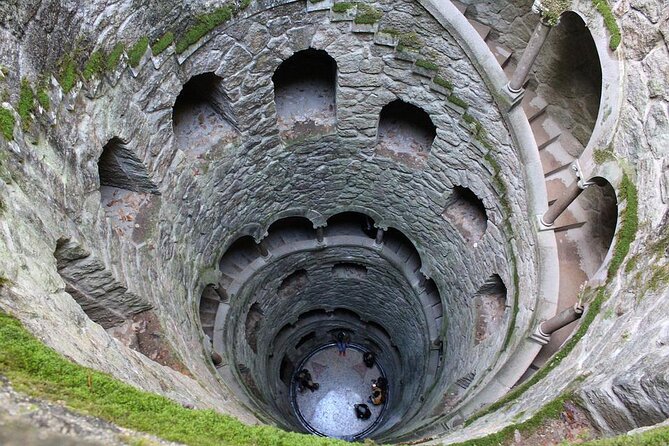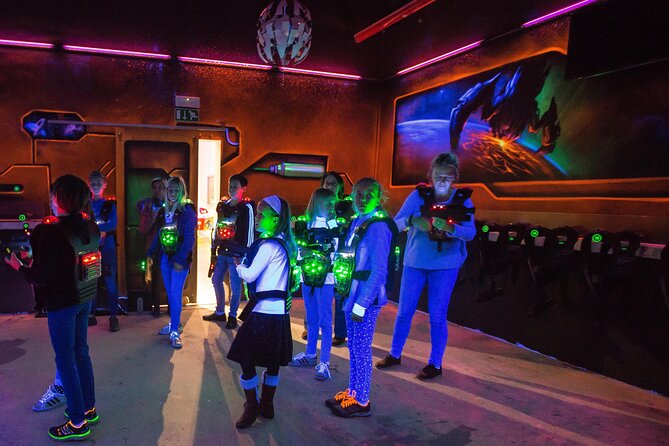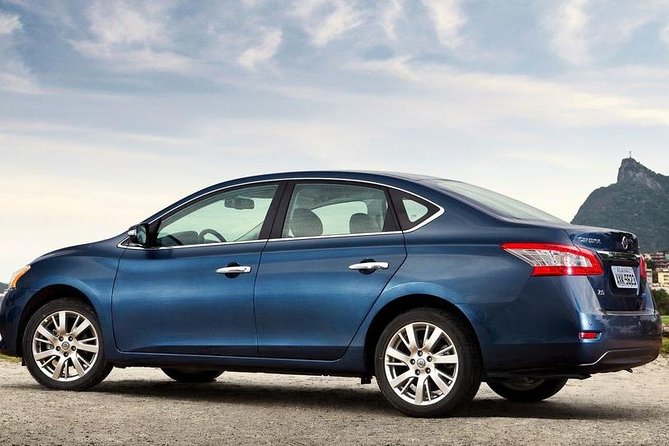Best Telescopes for Astrophotography
Finding the right astrophotography equipment is an essential part of any astrophotographer’s journey. This consists of a sturdy telescope mount, the right CCD or DSLR camera, and of course a great telescope.
Here’s a few of the best options, whether you’re looking for a beginner’s telescope for a newbie or something a little more advanced.
Best Telescopes for Astrophotography
SkyWatcher ProED 80mm APO
- EXPERTLY MATCHED GLASS: The EvoStar series features a matched doublet objective including one synthetic fluorite element, providing excellent color correction for visual and photographic uses
- OUTSTANDING COLOR CORRECTION: Using the finest quality glass and proprietary Metallic High-Transmission Coatings (MHTC), EvoStar refractors produce tack sharp images with accurate color and minimal aberrations
- EVOLVES WITH SKILL: No need to replace this telescope as your skill set evolves. Whether you’re a seasoned astrophotographer or a budding novice, EvoStar refractors are versatile enough to use as your primary optical tube as your skill-set improves
Sky-Watcher ProED telescopes use a standard achromatic doublet design featuring FPL-53 and Schott glass lens, creating a scope that has a fairly low chromatic aberration that is a marked improvement over less costly ED refractors.
This telescope has a slow focal ratio that also helps to control chromatic aberrations, making it easy to achieve a high magnification without a need for an ultra short focal length eyepiece. If you want to use this scope for astrophotography, the 600 mm focal length allows you to snap more than just wide field objects.
The focuser is a fairly unsophisticated dual speed Crayford 2 inch design, which some people report that it can slip under a heavy load. However, this may be due to not properly adjusting the tensioner knob, which is definitely something you’ll have to do if you’re going to get started with long exposure astrophotography.
The ProED is supplied with a number of accessories, including a 2 inch star diagonal, 20mm and 5mm eyepieces, and a 50 mm 9×50 right angle finderscope. These are pretty good, so you shouldn’t need to upgrade unless you are particularly picky. The scope is also supplied with a hard aluminum carry case.
On most EQ5 or ED6 mounts, the ProED 80 will work fine unguided, but if you want exposures of a minute or longer, autoguiding is a good idea. This will require purchasing a small guide scope to piggyback on your ProED, or you could use a guide scope rather than the 9×50 finder scope.
The 600 mm focal length will allow you to shoot a wide field, but you should also be able to get some good pictures of brighter and larger star clusters. The ProED will also provide crisp, almost pinpoint stars that look excellent and provide superb images.
The ProEd has a ¼ 20 threaded dovetail hole that can be used for a photo tripod, but this can be heavy and inconvenient. You may prefer a Vixen style dovetail and a compatible mount. However, if you want to try deep sky astrophotography, you may need to look at a computerized equatorial mount that has autoguider compatibility.
All in all, the ProED is a superb astrophotography telescope. It is great out of the box, but there is expansion and upgrade possibilities if you want to take the hobby even further.
Pros
- It comes with a great accessory kit that is more than sufficient to get you started, and when you consider all that’s included, it’s really difficult to beat for the price.
- 600mm focal length for wide field objects, though you can get a closer view by combining with a set of eyepieces and a solid Barlow lens.
- The dual speed focuser is ideally suited to astrophotography, and when you combine this with quality optics, it’s overall a very good telescope.
Cons
- Some find the focuser slips, but this can be corrected with proper adjustment. Though it can take a while to set up, it’s definitely worth it in the long run.
Verdict
The Sky-watcher is one of the best astrophotography telescopes currently available on the market – it’s great for both beginners and more advanced astronomers. It’s a great telescope that will enable you to get quality images of the night sky, and is ideal for long exposure astrophotography.
Orion ED80T
- Versatile triplet apochromatic refractor telescope featuring ED (extra-low dispersion) glass for exceptional resolution devoid of aberrations
- Fast f/6 focal ratio and 80mm aperture refractor excels in both visual and astrophotography applications
- Lightweight yet strong carbon fiber tube optical tube assembly construction makes this a great telescope to look at and through
The Orion ED80T is a versatile apochromatic refractor telescope with extra low dispersion glass providing an aberration free resolution. The 80 mm refractor is ideal for astrophotography and other visual applications.
The optical tube assembly is made of carbon fiber, so it is lightweight yet strong. This reduced weight combined with the wide field optics makes this a fantastic choice for sky photography.
The ED80T is equipped with a 2 inch, dual speed, Crayford focuser, 2 inch to 1.25 inch step down adapter, and dovetail finder scope base. The accessory pack also includes a foam lined carry case and Starry Night astronomy software. These accessories are top notch for any astronomy enthusiast or professional skywatcher.
This telescope features an 80 mm aperture with FPL-53 extra low dispersion glass to ensure that your images are rendered with incredibly sharp resolution in natural color. It provides crisp views with reduced chromatic aberration that is difficult to achieve with standard achromatic refractor scopes.
The focuser is a Crayford style, but it has undergone precision machining to provide dual speed focal adjustment, and you can use the smaller fine focus knob to adjust at a 11:1 rate. While the coarse knob allows you to hone in for crisp photos and sharp performance, and it will allow you to take high contrast images of the night sky.
There is also increased magnification with the 1.25 inch eyepiece and 1.25 inch imaging cameras due to the eyepiece adapter. Yet everything fits easily into the included hard case, so you can enjoy astrophotography on the go. This scope is lightweight and can easily fit onto any choice of tripod or mount system due to the integrated dovetail mounting base with adapter.
You can use a CCD or DSLR camera or by using an image capable equatorial mount. The ED80T also features a retractable dew shield, which is 14.3 inches when fully retracted or 18.25 inches when fully extended. This reduces peripheral glare and dew accumulation, which is definitely necessary for long exposure imaging, as you could be outside for quite a while.
So when it comes to the best astrophotography telescope, it’s very hard to look past the Orion ED80T. It’s a portable telescope with a sophisticated optical system capable of deep space imaging of the lunar surface, the Andromeda galaxy or whatever other astronomical target you set your sights on.
Pros
- Includes an integrated dovetail mounting base with adapter
- Carbon fiber tube creates a strong but lightweight scope
Cons
- Not great for cloudy skies; this scope works best in clear skies
Verdict
Another apochromatic refractor (the best type of telescope for astrophotography), the ED80T offers another solid option. It’s a tad expensive for beginners, but perfect for those looking to take things to the next level.
Orion SpaceProbe 130ST
- This 5.1″ aperture reflector telescope gathers an ample amount of light for great views of the planets and Moon, as well as brighter galaxies, nebulas, and star clusters
- Compact optical tube design for easy portability and fast f/5 focal ratio for pleasing wide-field performance makes the SpaceProbe 130ST EQ a very versatile telescope the whole family can enjoy
- Sturdy equatorial telescope mount and adjustable tripod allows manual slow-motion tracking of celestial objects as they appear to migrate across the night sky
The Spaceprobe 130ST is a good beginner astrophotography scope. It features a 5.1 inch parabolic primary mirror that allows a great view of the moon and planets while providing a wide field view of star clusters, galaxies, and bright nebulas.
The 130ST has a f/5 fast focal ratio for a strong wide field performance, so if you’re planning on doing astrophotography in your backyard, this is a strong choice. You can use magnifications of up to 260, since the top magnification is twice the mm of the aperture.
However, you may struggle to let enough light in with such a high magnification. So, you may find that you lose image definition and suffer from blurry shots. In real terms, you’re likely to find that 180 x is the usable maximum.
This scope has a 650 mm focal length, so to achieve this maximum magnification, you will need to use a 4mm eyepiece. The Spaceprobe is supplied with a decent kit that includes 10mm and 25mm Sirius Plossi eyepieces that provide 65x and 26x magnifications, respectively.
However, it would be a good idea to supplement this with something smaller such as a 6mm to provide larger magnification. The included lenses are ideal for a wide field of view, but you’re likely to want more magnification if you want to look at planets and the moon.
There are a few possible limitations with this scope. Firstly, the set up instructions are not particularly clear. Orion states that it takes approximately 30 minutes for the initial set up, but if this is your first telescope, you may find that your set up takes an hour or more. Fortunately, there are video tutorials available that can walk you through the process if you’re struggling.
The other potential drawback is that many users have found that the EQ-2 mount is a little too lightweight and can be unreliable. This is common in cheaper scope packages since many manufacturers put value into the mirrors rather than the mounts, as they want maximum magnification for planetary astrophotography.
At this price point, this scope is not likely to appeal to pros, so it’s not likely to be much of a problem for beginners. However, the optical lenses and high quality optics give this telescope good astrophotography capabilities. and undoubtedly make it one of the best astrophotography telescopes for picking out deep sky targets in the night sky.
Pros
- Good price and quality balance
- Easy to transport
- Wide field of view with the included lenses
Cons
- Low spec EQ mount that may prove unreliable
- You’ll need further lenses for higher magnification
Verdict
An expensive telescope isn’t a necessity to enjoy astrophotography. If you’re on a budget, then this model provides a great option for those that want to spend a little less on their model and prefer reflector telescopes.
GSKYER AZ70400
- Quality Optics: 400mm(f/5.7) focal length and 70mm aperture, fully coated optics glass lens with high transmission coatings creates stunning images and protect your eyes. Perfect telescope for astronomers to explore stars and moon.
- Magnification: Come with two replaceable eyepieces and one 3x Barlow lens.3x Barlow lens trebles the magnifying power of each eyepiece. 5×24 finder scope with mounting bracket and cross-hair lines inside make locating objects easily.
- Wireless Remote: Free includes one smart phone adapter and one Wireless camera remote to explore the nature of the world easily through the screen and take amazing celestial images.
The GSKYER AZ70400 package includes a short focal length refractor with a camera type tripod, carry case, two eyepieces, finder scope, 3x Barlow lens, and 45 degree diagonal. While this is clearly targeted at the low end beginner market, it does provide a fairly solid package.
The AZ70400 includes pictorial assembly instructions that provide a decent insight into how to complete the initial assembly, but there is no user’s guide or owner’s manual, which could be problematic if you are a complete scope novice.
There are no instructions included on how to align the finder scope, focus, or even use the telescope to view astronomical objects. There isn’t even an online manual, so you will need to look for a separate guide, which will need to be factored into the price.
The AZ70400 features a 45 degree diagonal that makes it ideal for viewing objects below 30 degrees from the horizon or daytime spotting. However, if the objects you’re looking for are higher, it may become a little bit awkward, and you may need to raise the scope or drop lower to be able to use the eyepiece.
If you do find that you’re viewing near the zenith, you’re likely to need to add a 90 degree diagonal to your kit, but this can be added later once you become more comfortable using this scope.
The included eyepieces are well suited to this scope, and when combined with the 3x Barlow, you can enjoy 48x and 120x magnification. This should be more than sufficient since 120x is likely to be the practical limit for this 70mm refractor. If you do want to add eyepieces to your kit, you could fill in the gap between 48 and 120, so you can enjoy more of the range.
The included tripod is lightweight and a camera type model, which is adequate for this weight of scope, but it lacks slow motion controls, and without a manual, you may struggle to get the best out of it. It’s not amongst the best telescopes for astrophotography, but it does offer reasonable image quality for the low price.
Since this refracting telescope is in the lowest price range, you cannot expect a comprehensive package, but if you’re a complete beginner to astrophotography and not sure if you want to invest, it could provide a great entry point.
Pros
- Bargain price
- Decent eyepieces included
Cons
- No manual included or available online
- Limited to 45 degree diagonal viewing
Verdict
Another cheaper option for those looking to get started without investing a ton of money – it’s a great starting point. It’s ideal for getting deep sky images of the night sky.
Meade 216004
- Aperture: 130mm(5. 1″). Focal Length: 650mm. Focal Ratio: f/5. 0. Rack-and-Pinion Focuser, Setting Circles, Latitude Control w/ Scale
- Large, stable German equatorial mount with slow motion controls makes tracking celestial objects smooth and simple
- Low (26mm), medium (9mm), and high (6. 3mm) magnification eyepieces give you variety for any viewing situation & 2x barlow lens doubles the magnifying power of each eyepiece
The Meade 216004 has a 114 mm aperture and offers a focal length of 1000 mm with a stable Equatorial Mount that includes slow motion control for easy and quick viewing in different directions.
The kit also includes a number of accessories, including 2x Barlow Lens, 3 eyepieces, and a red-dot viewfinder. The Red Dot viewfinder is a zero magnification tool that superimposes a small red dot as a pointer onto the night sky.
This is remarkably easy to use, since you just look through the sight and move the scope until the dot merges with the object. This kit provides you with the versatility for astrophotography of both short and long range objects.
When fully assembled, this scope weighs a substantial 22.3 pounds, so it is not particularly easy to transport, but if you plan to do your stargazing in one place, it is certainly a good package.The three eyepieces it comes with means that you’ll get a good variation of magnifications.
Like all the scopes in the Meade Polaris line, the 216004 is supplied with a DVD of AutoStar Suite Astronomer Edition software. This bonus will help you to learn the night sky and shows over 10,000 celestial objects to help you get to grips with astronomy.
This scope provides bright, clear images in the greatest detail. You’ll be able to get images of the Moon craters, Saturn’s rings, or even the surface of Jupiter. So, you can capture some stunning shots in crystal clear clarity. This scope is ideal for those who want to manually observe and discover celestial objects with ease.
Pros
- AutoStar Suite Astronomer Software included
- Red Dot Viewfinder
Cons
- More premium spec with a matching price tag
- Substantial weight at 22.3 pounds
Verdict
This Meade model is another reflector which will give you clear views of the night sky, though it doesn’t have the long focal length that some more experienced astrophotographers may require.
Astrophotography Telescope Buying Guide
In reality, if you’re planning on taking up astrophotography, you need to be prepared for this hobby to start getting fairly expensive, quite quickly.
While it is possible to start with a tripod and your smartphone, if you do want to get a telescope, it is a good idea to start with a cheaper model that provides some expansion possibilities. This can allow you to ensure that you’re committed to astrophotography, you can then develop your own full set up.
Once you’re ready to make a purchase decision, you may find the choices overwhelming, so we’ve compiled a buying guide to walk you through the options.
Achromatic vs Apochromatic
These terms can seem confusing, particularly to beginners, so we’ll explore them in the simplest way possible. Essentially, apochromatic or APO scopes have better spherical aberration correction compared to achromatic scopes. This is crucial for astrophotography, as you want to avoid any color fringing in your photos.
APO scopes also use ultra low dispersion glass in the objective lens for clearer, crisper images. Achromatic lens refractors can cause purple halos or fringing, particularly when you’re looking at brighter images. However, this is reflected in the price, since apochromatic scopes tend to be far more expensive.
Now, this doesn’t mean that you should ignore other types of telescopes. Other styles, like Schmidt Cassegrain telescopes, can also be very useful for astronomy.
A good example of the Schmidt Cassegrain is the original LX200 series. You can also consider Newtonian reflectors, which can be a shrewd investment if you’re trying to get started with exposure astrophotography on a budget.
But for the most part, many people will say that for the price, an APO refractor will likely be the best place for you to start.
Portability
A powerful telescope is fantastic if you live in an area with minimal light pollution and can keep your scope in your backyard.
However, if this is not possible, you may need to be able to put your equipment in your car and move to a more suitable spot. For this reason, you’re likely to want a lightweight and portable scope that is easy to transport.
This is one reason why refractor telescopes are quite popular for astrophotography. Even most of the high end models tend to be fairly lightweight, which makes them perfect for the job.
Ease of Use
Refractors do not need collimation or aligning the mirrors with the eyepiece, making them a great choice for beginners or those who lack patience. Since refracting telescopes use lenses, collimation is only necessary if you opt for a reflecting telescope.
So, if you want a scope that is easy to use, it is best to opt for a refractor that is easy to focus, and use. It is also a good idea to look for a scope that is supported with a good manual or user’s guide. This can save you the trouble of needing to purchase separate resources to be able to get the best out of your new scope.
Price
As with most major purchases, price is likely to be an important factor. The cost of your new astrophotography scope will depend on whether you opt for a reflector or refractor scope, and other factors.
Generally, you will need to budget $500 or more for all the stuff you’ll need, but as we’ve discussed above, there are some decent beginner’s kits that carry a more modest price tag.
Focal length
The focal length of your telescope is important, as it’ll dictate the field of view. This will be the difference between a wide view telescope that’s best for distant deep sky photography and a narrow field of view that’s better for seeing star clusters and objects in the solar system up close.
If you want the ability to see faint deep sky objects, a telescope with a short focal length is essential.
The Wrap Up
If you’re considering taking up astrophotography as a hobby, you’re likely to be aware that not any old telescope will do.
Although complete beginners may be able to manage with a good camera or the latest smartphone, as you develop your skills, you are likely to find that you want to take clearer and deeper pictures, which makes a telescope a necessity.
There is a clear difference between the best telescopes and the best telescope for astrophotography, so it is important that you differentiate between the two types. Astrophotography is a fantastic hobby that can develop into a decent side gig if you can capture some great images.
There are a number of factors that you’ll want to consider before you make a final purchase decision.
This includes your budget, area of interest and even whether you prefer to observe and take a few photographs or will be specializing in astrophotography. Plus, portability will probably also be a factor, though you don’t necessarily need a portable telescope.
However, you will need to seek out the best equipment that meets your specific requirements.
If you asked several different astrophotography pros, you’re likely to find that they each have a different recommendation for a beginner scope. So, it is well worth doing some additional research before you make a final purchase decision.
As we’ve discussed above, there are some great options at all price points. If you’re not on a particularly restrictive budget, it is great to be able to immediately jump into deep sky imaging.
However, if you have a more modest budget, you can still get some great results with a value scope and your existing camera or smartphone.
Fortunately, there are some great resources out there. You can visit your local astronomy society and ask for help to get started or make use of the software, user manuals, and guides that are supplied with many telescope kits. This is a fantastic hobby, and it is worth looking at the options that are financially viable for you.
If you have limited funds, you can always create a scope wish list and get started with some smartphone apps, so you can get a feel for the hobby and encourage your passion for astrophotography while you save up some cash.





